“High key” and “low key” are creative styles that photographers often use to evoke a specific mood or emotion in their images. In my last post, we explored high key toy photography. So this time we’ll take a look at low key toy photography.
Defining Low Key
Recall that all photographs contain a range of tonal values, anywhere between pure black and pure white. Technically speaking, when most of the values are in the darkest part of the tonal range, it is considered “low key”. Here is a photo of average tonal range and a low key photo. You can examine the tonal range of a photo by viewing its histogram in-camera or in post-processing programs such as Lightroom.
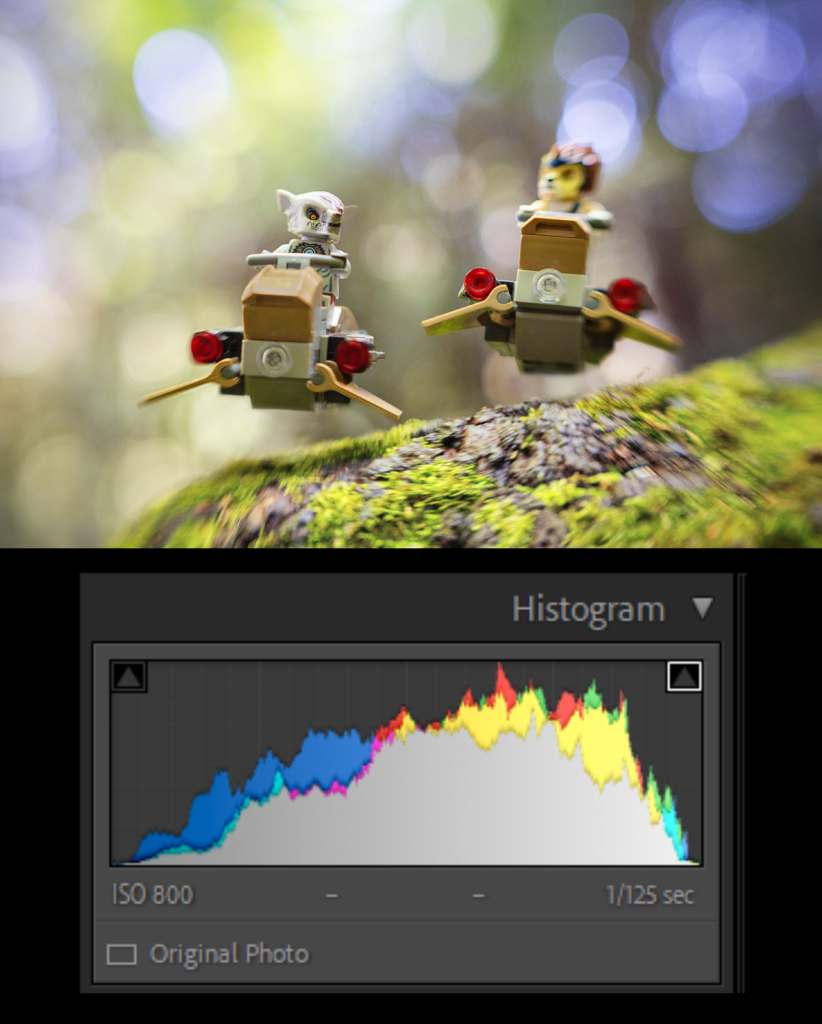
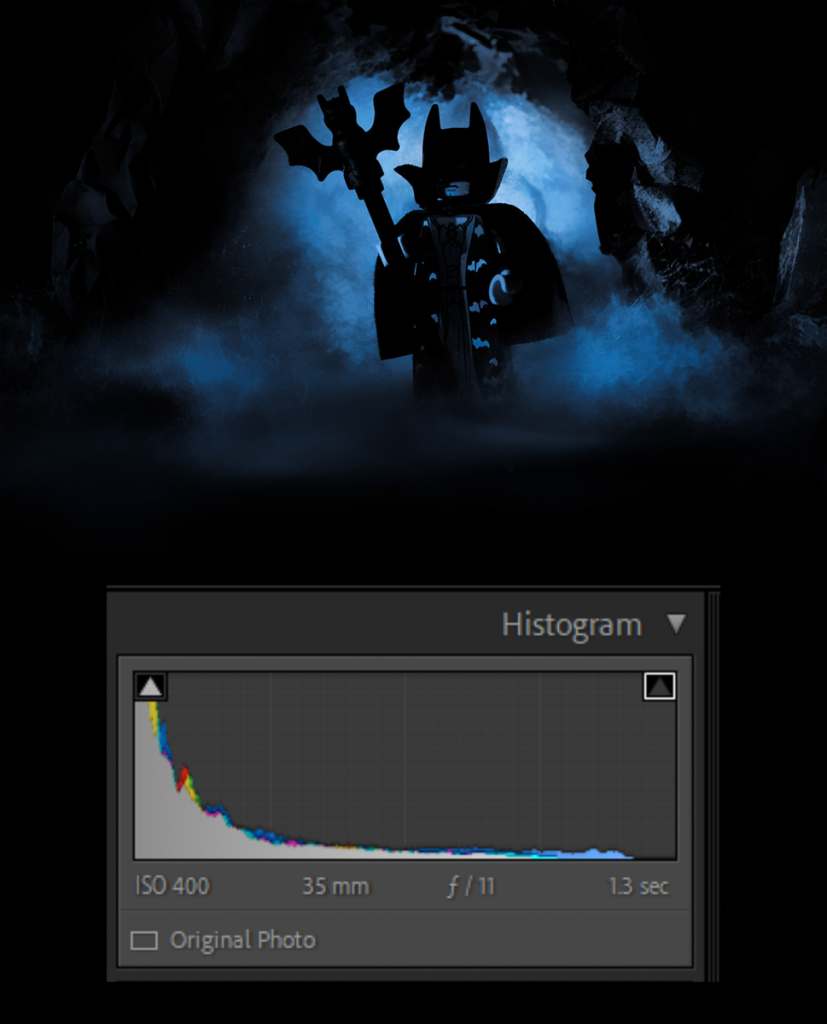
But low key photography is not just about exposure and histograms. Careful placement of the light and dark areas in the image creates interest and drama and draws the viewer’s eye to the subject. Successful low key toy photos also reflect intentional decisions about composition, toy choice, and atmosphere.
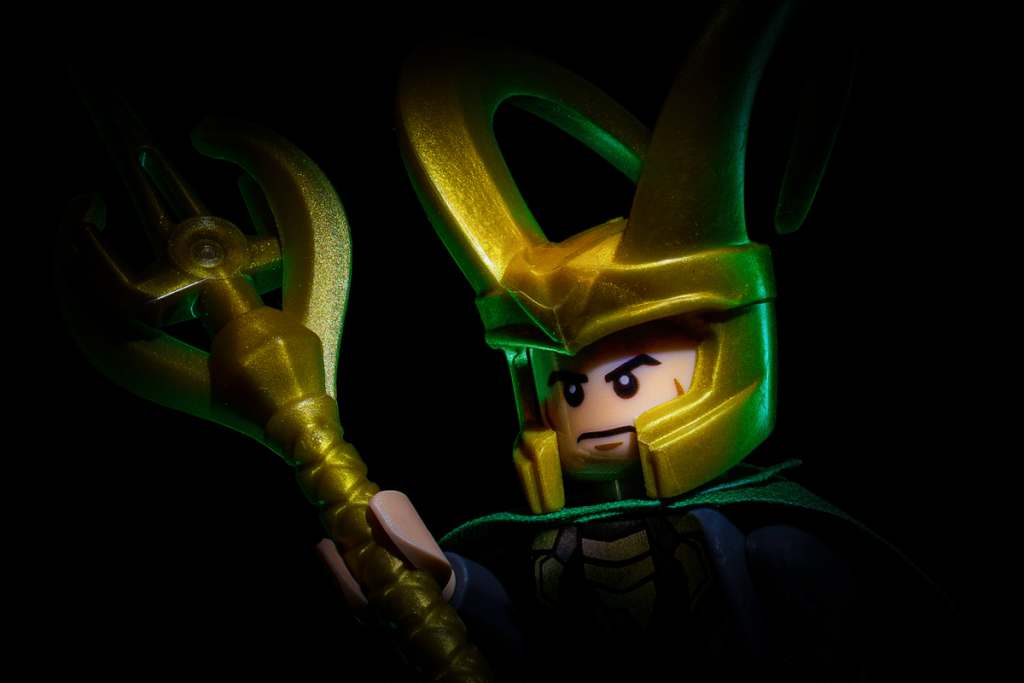
Creating a Mood
Low key images commonly convey a dark and serious tone, mystery, or suspense. Product and portrait photographers often use low key lighting for a different reason – to convey a sense of style, luxury, or elegance. We can do both with toys.
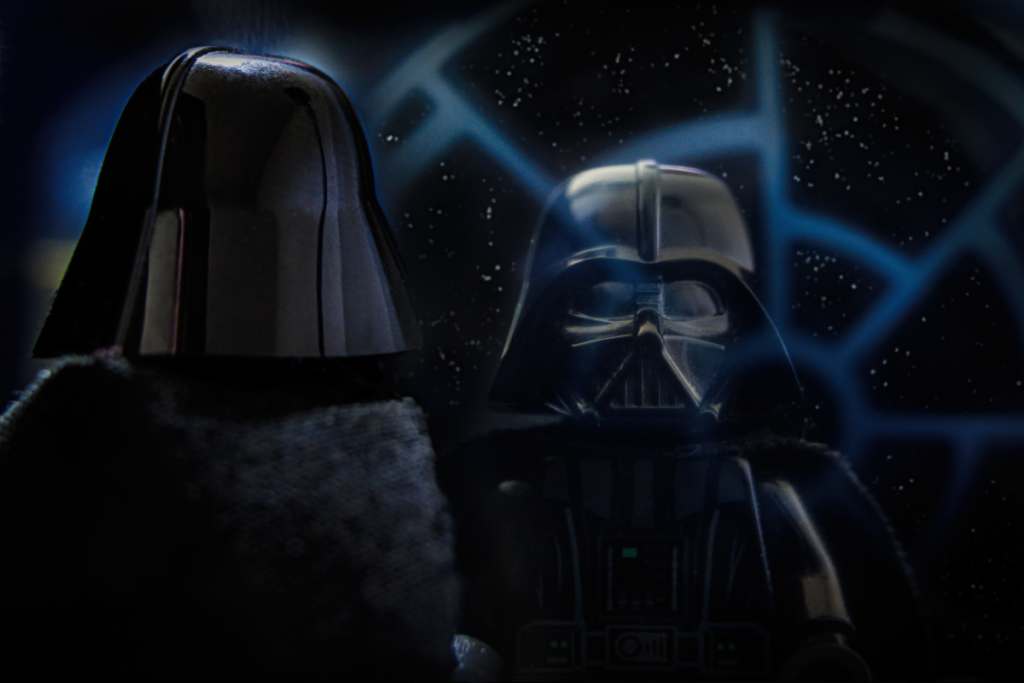
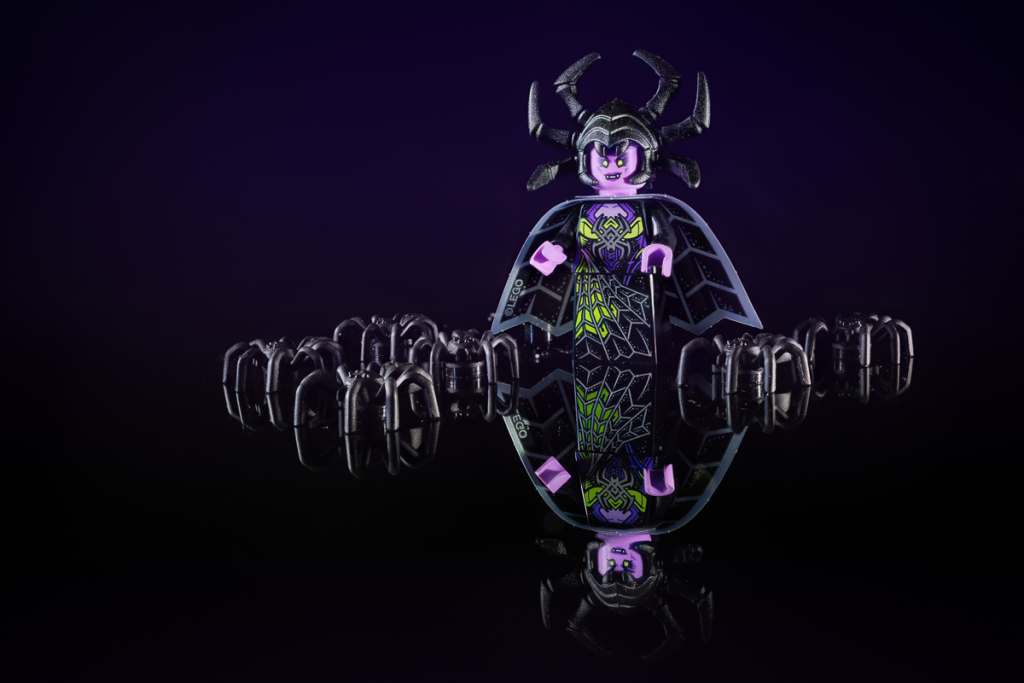
How to Create a Low Key Toy Photo
I find that low key toy photos are easier to create indoors because you have more control over the lighting.
Start with a black background or dark scene. Experiment with positioning your lighting around your setup, paying attention to where the light falls on your main subject. Modify your light(s) and adjust the setup to block light from spilling on areas where you don’t want it. Use a fill light or reflector if needed to bring some detail to the shadow areas. Additionally, you can underexpose in-camera, but keep in mind that it may be harder to recover information from the blacks and shadows later. Keep your ISO as low as possible to minimize noise. Finally, you can use post-processing to further darken the exposure, increase contrast, and retouch areas you do not want to draw attention to.
I created all the images for this post with LEGO or custom minifigures. But action figures or any toy with dimension and texture will look awesome with low key lighting (and will probably be easier to achieve than LEGO!).
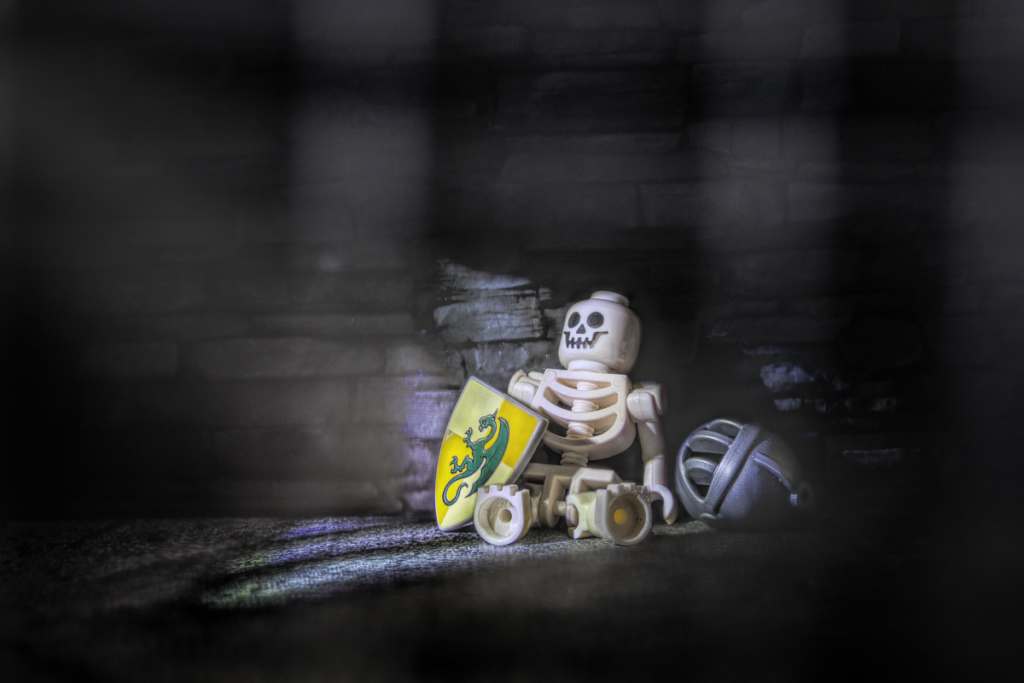
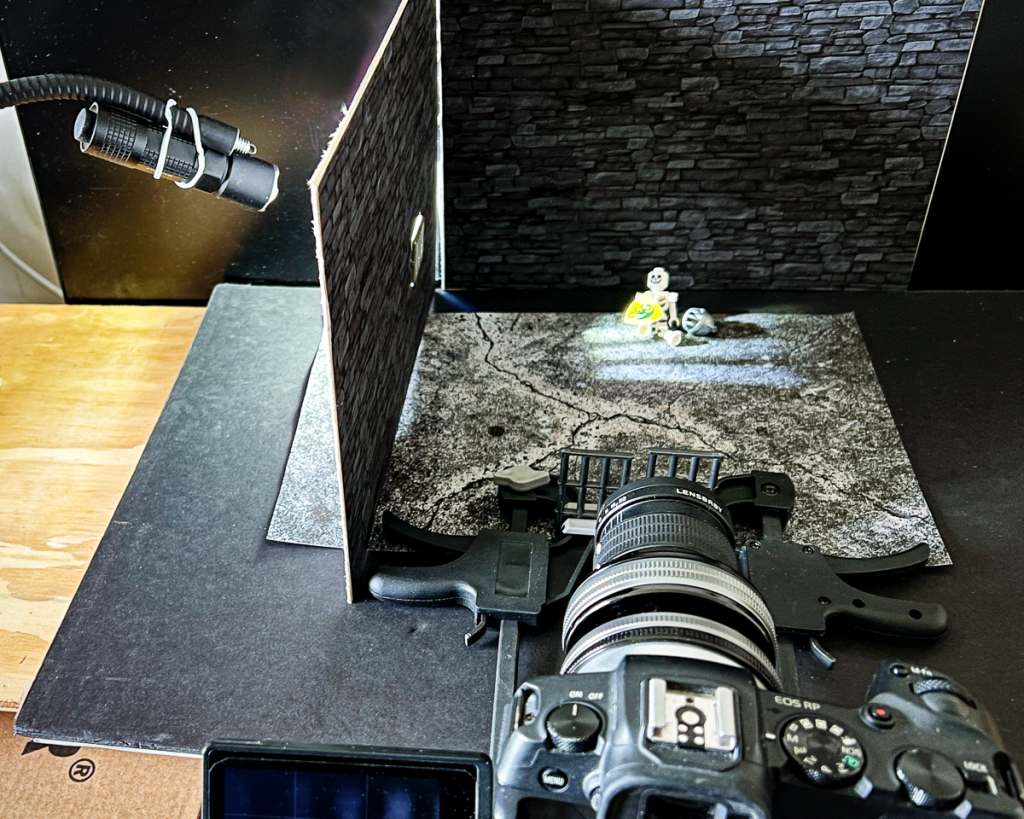
Here are more low key photography ideas to try with your toys.
Portraits
The iconic chiaroscuro style, made famous by Renaissance painters, creates the illusion of depth by using lights and darks to accentuate contours, texture, and shapes. In portrait photography, side-lighting, which results in more “suggestive” lighting (rather than evenly lighting the entire subject) creates this effect. It works quite well for toys too.
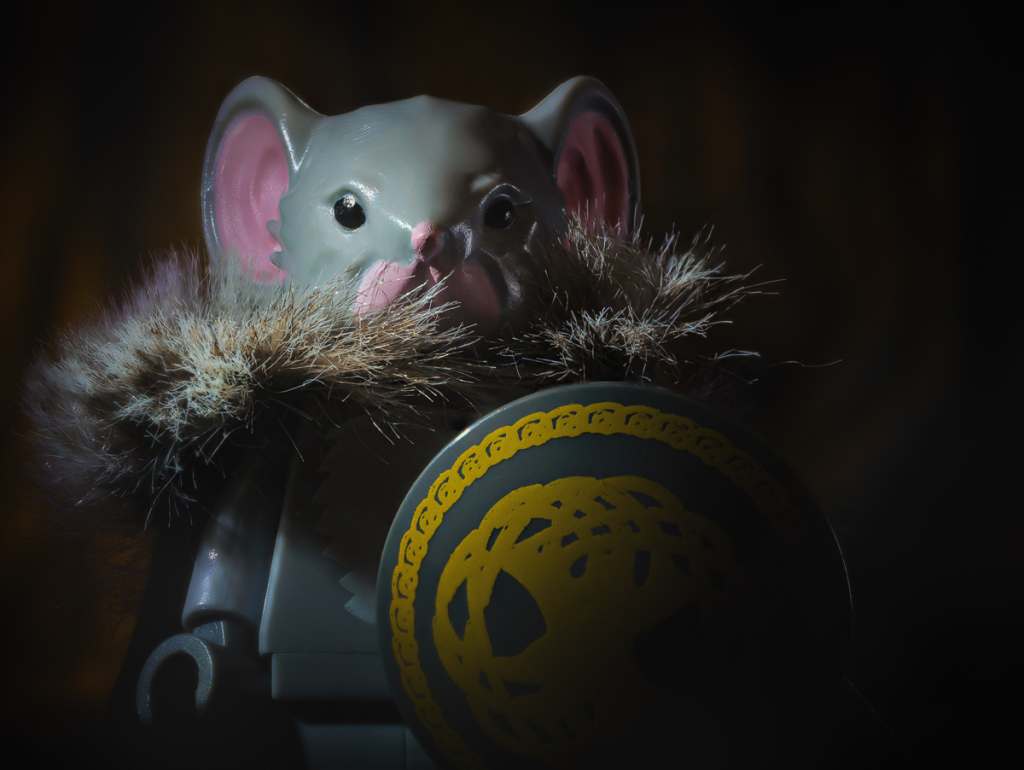
Rim Lighting
Rim lighting is a great technique to use when you want to highlight only the edges or contours that define a subject’s shape. Set the light(s) behind or to the side of your setup and then adjust them to get the light to fall where you want it. It takes some time to position the figures and the lights, but it’s worth the effort. Toys with an interesting or recognizable shape work best for rim lighting.
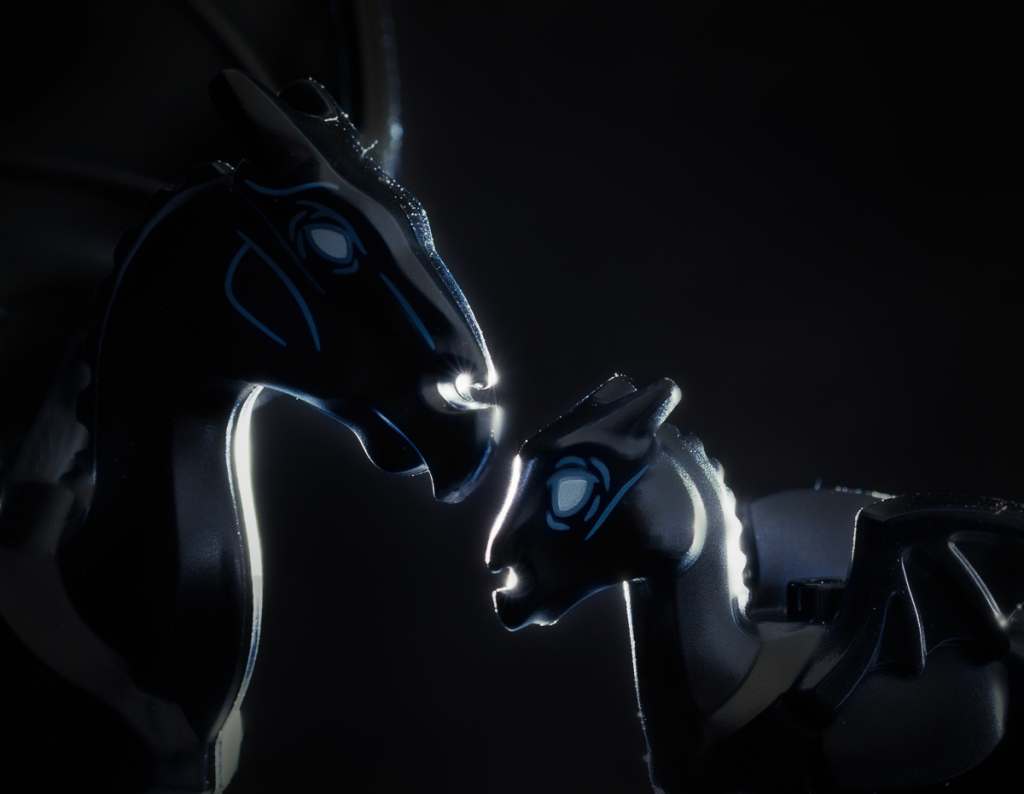
Noir
Noir (film noir) is a low key style using harsh lighting, lots of shadows, and deep blacks to create a foreboding, mysterious mood. Traditionally, noir movies and photos are black and white (but they don’t have to be). Take a closer look at how to create noir-style toy photos in this post.
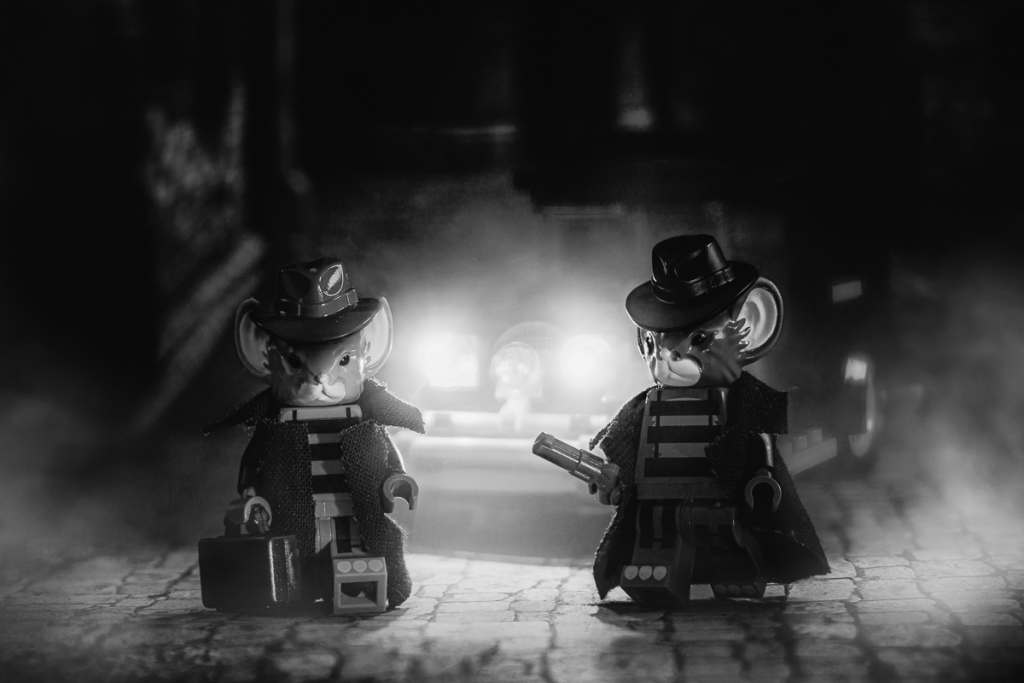
Outdoors
Creating low key photos outdoors may be more challenging than indoors, but don’t let that stop you. Choose a location with a dark background or shade. Even better if there is dappled light or a shaft of sunlight :). Then position your toy in the light or at the edge of the shade with the light falling on them. Alternatively, you can also use a small light to light the subject. Or try photographing at night using a flashlight, street light, or other light source.
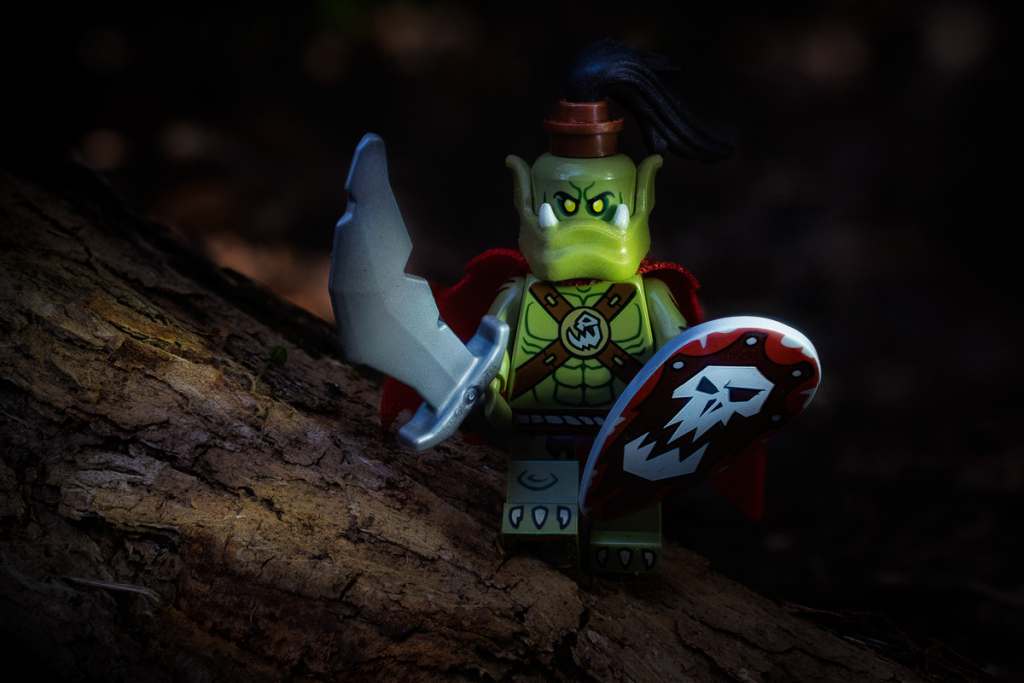
Wrap-up
This was a quick introduction to creating low key toy photos. Look around the toy community and you’ll find some really fantastic examples for inspiration. For starters, check out the incredible work of @cattie.combs, @toyingwithlight, and Tobias M. Schiel.
If the low key style appeals to you, try it out with your toy photography. It’s super fun! And if you are joining in on the Toy Photographers MeWe 2023 Photo Bingo Challenge, you’ll be all set for the #tp_low_key prompt. Have fun!



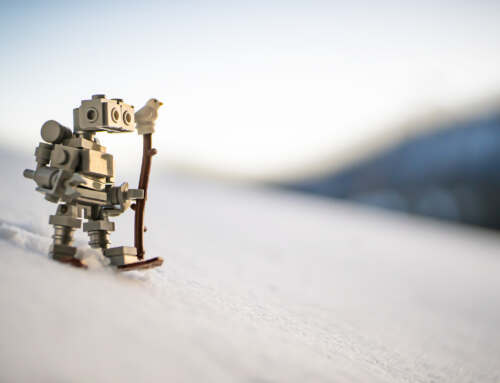
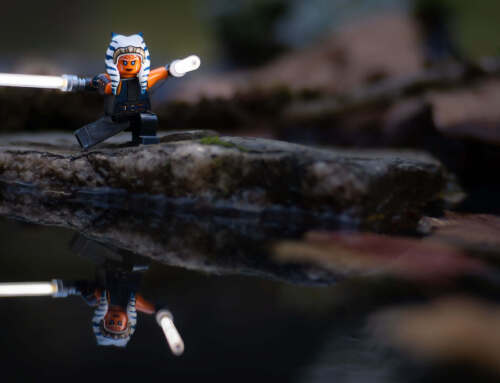
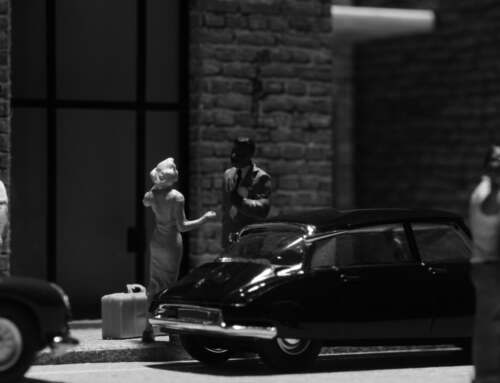
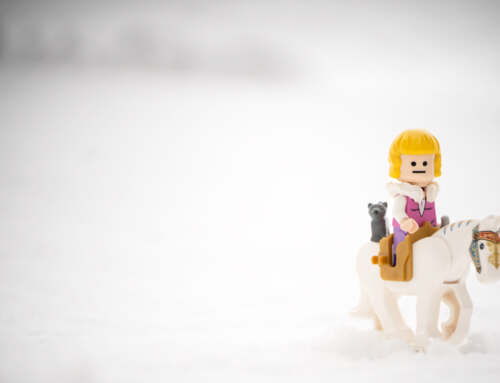
Very useful tips, Chellie! And fantastic photos. Thank you!
Excellent article, Chellie!! And, as always, I love your photos that illustrate our points!
What a great piece Chellie! This was very helpful. I might give it a try.
Enjoyed these examples. Great contrast with the “high key” article!